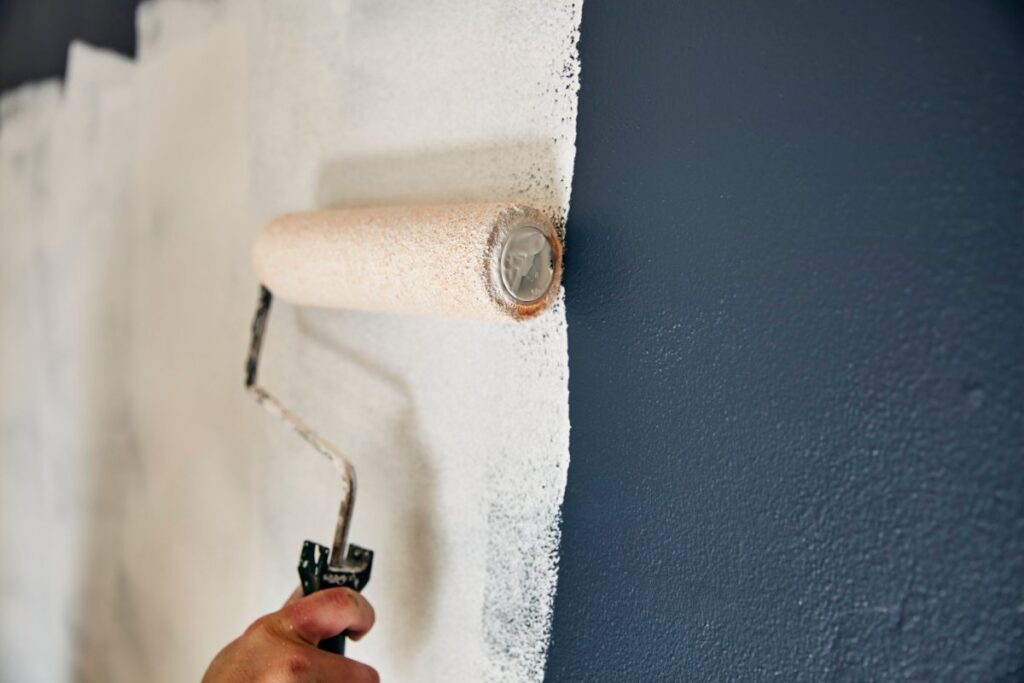Steam condensation on your bathroom mirror may not seem like a big deal, but it can be a major headache for architects and builders.
“Moisture control is a huge pain point,” says Derek Stein, founder and CEO of Adept Materials. “Just Google the name of your favorite homebuilder and then type in 'lawsuits' and you'll find tons of stories.”
Homes and offices once “breathed” through cracks and gaps overlooked during construction, but in the quest for greater energy efficiency, builders are becoming more airtight. Airtight buildings help maintain a consistent indoor temperature, but they can also trap moisture.
“Essentially, buildings are being built like beer fridges. They're great for energy efficiency, but obviously people don't like living in a beer fridge,” Stein says, “and it creates a whole host of other issues, like moisture damage.”
Dehumidifiers are one option, but they're noisy and expensive, so Stein, a former physics professor at Brown University, came up with an alternative: a two-material system that automatically regulates humidity in your home.The inspiration for the system came from wood and semiconductor diodes.
Trees and other plants regulate their temperature in part by evaporating water through tiny stomata in their leaves. When it gets too hot, the stomata open up and more water evaporates, just like how sweat cools your skin. When the temperature drops, the stomata close and evaporative rates slow. Stein thought that if they could find a way to similarly absorb and diffuse water vapor at the right times, they could make buildings more comfortable and energy efficient.
Many materials disperse moisture, but they're not very clever about where they distribute it: Without something to help move the moisture in the desired direction (for example, outside the wall cavity), mold and rot can occur.
That's where diodes come in. Being a physicist, Stein knew very well how diodes worked: In a diode, electrons can flow freely in one direction but are resisted in the other direction. Essentially, a diode acts like a one-way door.
What he came up with is a system of two materials: one that absorbs water vapor like a sponge and releases it over time; and a more conventional weather-resistant barrier that blocks air flow while allowing water vapor to pass through. Stein's sponge layer acts as a traffic controller: When installed on an exterior wall, it draws moisture away from the home through the inner barrier. There it stays until the sun warms the outside of the wall, causing the moisture to evaporate.
Builders are buying weather-resistant barriers in large quantities, with the value reaching about $14 billion by 2022, according to Global Market Insights. But the construction industry tends to be cautious about new technologies, in part because the problems they cause can be expensive to fix. “In the construction industry, the valley of death is generally deep and wide,” Stein said, referring to the gap between developing a product and actually getting customers to buy it.
To traverse the valley, Adept is designing buildings to look and feel like the old ones. “One of the big barriers to adoption is that it looks and feels different,” he says. “People resist change.”
While Adept continues to improve its waterproof barrier, it plans to sell another product: a paint and primer system for bathrooms. The primer acts as a barrier layer, and the paint acts as a sponge. When humidity levels rise in the bathroom, the super-absorbent paint soaks up the moisture and doesn't release it until the bathroom humidity levels drop.
To test the paint's performance, Adept built a bathroom-sized room and boiled water to increase humidity. Stein says the paint reduced humidity by 14% compared to conventional paints. Adept's paint and primer are expected to hit the market early next year.
The startup recently raised a $4 million seed round to bring the paint to market while continuing to develop its waterproof barrier. The round was led by DR Horton, with participation from Pulte Group, both of which are the largest homebuilders in the U.S.
“As a startup, you want to do pilots and stuff, and people might not be interested,” Stein said, “but if the largest homebuilder in the U.S. says this is interesting to us, then things will move in your favor.”



